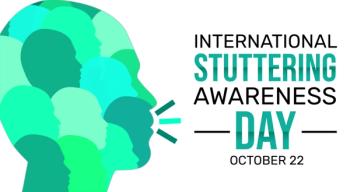
Deep Brain Stimulation in Chronic and Severe Anorexia Nervosa
Deep Brain Stimulation is a neurosurgical procedure initially developed for the management of treatment-refractory movement disorders. More recently, the rationale for the use of DBS in anorexia nervosa derives from several sources.
[[{"type":"media","view_mode":"media_crop","fid":"23135","attributes":{"alt":"","class":"media-image media-image-right","id":"media_crop_7260563962522","media_crop_h":"0","media_crop_image_style":"-1","media_crop_instance":"1772","media_crop_rotate":"0","media_crop_scale_h":"0","media_crop_scale_w":"0","media_crop_w":"0","media_crop_x":"0","media_crop_y":"0","style":"margin: 5px; float: right;","title":" ","typeof":"foaf:Image"}}]]Anorexia nervosa (AN) is a serious medical condition with a high rate of both mortality and chronicity. Affecting both men and women, the mortality rate for the condition is estimated at 10% to 15%, and an additional 10% to 15% will go on to develop a chronic form of the illness.1,2
Current treatments are able to help many individuals who suffer from this disorder. While there have been promising advances over the last decade in the treatment of adolescent AN through the development of novel forms of family therapy, there have been few significant improvements in treatment for adults, especially those with chronic illness. Treatments focused on this group would have a significant effect on reducing both mortality and general suffering experienced by these individuals.
Deep Brain Stimulation (DBS) is a neurosurgical procedure initially developed for the management of treatment-refractory movement disorders, such as Parkinson disease and essential tremor. More recently, there has been interest in investigating the use of the procedure in other circuit-based disorders, including psychiatric conditions, such as depression, OCD, schizophrenia, and Alzheimer dementia. Since 1987, over 100,000 individuals have had the procedure for neurological or psychiatric conditions, and the number of trials for new indications continues to grow.
During a DBS procedure, electrodes are introduced bilaterally under stereotactic and fluoroscopic guidance to deep brain targets identified on a pre-operative MRI. These electrodes are tested in the operating room with the patient awake and under local anesthesia, and then in a separate procedure the electrodes are connected to a programmable stimulator implanted in the anterior chest wall. The device is then activated a short period of time later, with the parameters of the stimulation monitored externally. The battery life for the stimulator depends on the intensity of the stimulation, but is typically 2 to 4 years. Replacements are performed with local anesthesia and sedation.
The rationale for the use of DBS in AN derives from several sources.3 The insula has been implicated in interoception-that is, in the way in which the body is experienced internally, and appears to be involved in decisions about acceptability of food. The anterior cingulated (AC), and in particular the subcallosal cingulate (SCC), appear to be implicated both structurally and functionally in the symptoms of AN. The AC is also involved in both mood states and the regulation of affect, both directly and through its influence on higher cortical structures. Finally, the ventral striatum, or nucleus accumbens (NAC), may be involved in reward circuits, with some research suggesting that the NAC does not function normally in anorexia nervosa patients compared with healthy controls. It was thus thought that stimulation of either the AC or NAC would be potential targets for a trial of DBS in AN.
In our research, we decided to focus our attention on the AC, and specifically the subcallosal cingulate. The rationale for this decision related to our understanding that alterations in mood and the regulation of mood seem to have a very important role in the initiation and maintenance of AN. We also were able to assess the response to AC stimulation in depression, given the presence of a large series of cases in our setting. Our initial work has been a phase I clinical trial to establish safety and tolerability: we are presently in the midst of a phase II trial to start the process of evaluating efficacy. Entry criteria for the trial includes a history of either chronic, treatment- resistant AN, or malignant AN. Risk of a premature death in the reasonably near future was an important factor to consider in selecting subjects suitable for the trial, which does represent a last hope for many subjects.
Our study presently has 15 subjects enrolled who have had the procedure. Six further patients are awaiting surgery. We recruited our first 12 patients in approximately 14 months. By comparison, in the first trial of DBS for depression conducted in this setting, it took two years to recruit the first 6 subjects. This alone suggests that there is a meaningful population of individuals with chronic, severe AN who are willing to undergo experimental neurosurgery in the hope that they might derive some benefit from the procedure.
We set a threshold of a BMI of 13 to be able to perform the surgery. Several subjects required hospitalizations before surgery to make them suitable for the procedure.
Our operative experience has been positive, with few adverse events, none of which were unexpected. Patients tolerated the procedure well, and there were few post-operative complications. One patient, with severe comorbid OCD did find it impossible to resist picking at the incision line in her scalp and we eventually had to remove the device.
We initially reported on 6 patients and we now have 8 subjects, on whom we have 1- to 2-year follow-up data.4 Other subjects have shorter periods of follow-up available, and we will report on these separately. We presented data on our first 8 patients in the fall of 2013.5 From a psychometric perspective, there are significant improvements in mood, anxiety, and obsessionality by 6 months post-simulator activation. These improvements occur outside of any active treatment for the most part and are striking given the notable difficulty in generating such improvements in very underweight individuals. Weight showed an initial decline back to pre-surgery levels, but was slowly increasing by 6 months.
There were some improvements in other core eating disorder (ED) symptoms, including reduced levels of bingeing and purging, and exercise. We noted consistent improvements in comorbid OCD and PTSD in several subjects who suffered from these conditions. Anecdotally, patients reported much better affective regulation, and explained symptom reduction, when it occurred, as a function of having much better control over their responses to affective events.
Of these 8 subjects, 6 decided to re-enter specialized treatment for their AN in the 4- to 9-month period post-surgery. None of these patients had previously been able to become fully weight restored, and between them they had over 50 intensive treatments. Strikingly, all 6 were able to complete treatment, and with much less difficulty than expected. Improved mood, decreased anxiety, and better regulation of affect seemed to allow these patients to tolerate the treatment more easily-and most reported having been able to do therapeutic work in treatment that they had not previously felt comfortable with.
Brain imaging, via positron emission tomography (PET), has shown significant changes in cerebral glucose metabolism in key AN-relevant brain structures, including the subcallosal cingulate, insula, and parietal lobe. These results are consistent with our initial hypotheses relating to brain circuit functioning in AN.
We have had 3 long-term good outcomes from this cohort, two of whom are weight restored at 10 to 12 months, after 17, 20, and 35 years’ duration of illness. Several of these subjects have required a battery replacement. Interestingly, several subjects who have not had any meaningful response in terms of their ED have also decided to have their battery replaced, as well.
These findings are extremely preliminary and need to be considered with some care. The possibility of a placebo response cannot be ruled out, and this will require a sham-controlled trial. The apparent responses in terms of mood, anxiety, affective regulation, and ED symptom change, while appearing to be fairly robust in the face of significant dietary restraint, can attenuate if the patient’s nutritional state deteriorates sufficiently-and then return with even a small improvement in eating.
The availability of functional brain imaging as a routine part of therapeutic trials in psychiatry-via PET and functional magnetic resonance imaging-do open up an exciting new door to our understanding, not only of brain functioning in AN, but also to the direct effect of our treatments of brain function.
Finally, the long-term acceptability of surgical treatments for psychiatric illness such as AN remains an open question. With the advent of new surgical techniques that improve the side-effect profile of the procedures, it is certainly possible that we may see a continuing interest in techniques such as DBT.
Disclosures:
Dr Woodside is Medical Director, Program for Eating Disorders, Toronto General Hospital, and Professor, Department of Psychiatry, University of Toronto, Toronto, Ontario, Canada. Dr Lipsman is a resident in the Department of Neurosurgery, Toronto Western Hospital, Toronto, Ontario, Canada. Dr Lozano is Chair, Division of Neurosurgery, Toronto Western Hospital, and Professor, Department of Surgery, University of Toronto, Toronto, Ontario, Canada.
References:
1. Smink FR, van Hoeken D, Hoek HW. Epidemiology of eating disorders: incidence, prevalence and mortality rates. Curr Psychiatr Rep. 2012;14:406-414.
2. Arcelus J, Mitchell AJ, Wales J, Nielsen S. Mortality rates in patients with anorexia nervosa and other eating disorders. A meta-analysis of 36 studies. Arch Gen Psychiatry. 2011l;68:724-731.
3. Lipsman N, Woodside B, Lozano AM. Evaluating the potential of deep brain stimulation for treatment-resistant anorexia nervosa. Handb Clin Neurol. 2013;116:271-276.
4. Lipsman N, Woodside DB, Lozano A. Deep Brain Stimulation in Anorexia Nervosa. Eating Disorders Research Society Annual Meeting [Poster presentation]. Bethesda, MD. September 2013.
5. Lipsman N, Woodside DB, Giacobbe P, et al. Subcallosal cingulate deep brain stimulation for treatment-refractory anorexia nervosa: a phase 1 pilot trial. Lancet. 2013;381:1361-1370.
Newsletter
Receive trusted psychiatric news, expert analysis, and clinical insights — subscribe today to support your practice and your patients.














